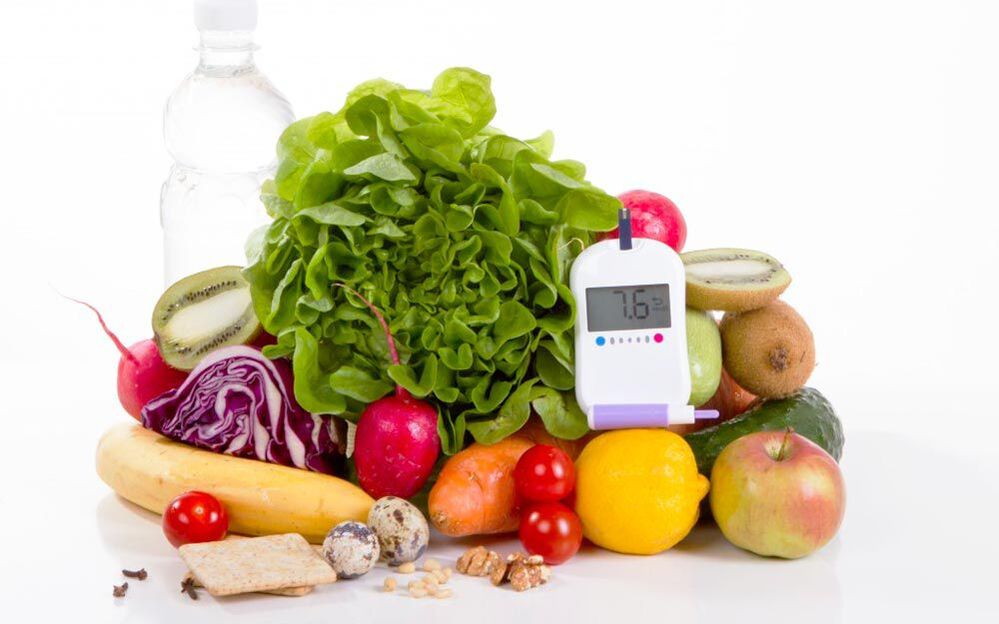
Diabetes mellitus is a common disease that probably every adult has heard of. It can be congenital or acquired during life, but in any case, it is chronic and cannot be completely cured. Many have heard that diabetes is not a disease but a way of life. After all, the patient should be on a special diet for life and use individually selected medications, and not always insulin injections. In general, food in diabetes mellitus can not be considered a diet in the widespread sense of the word, because there are not so many restrictions on it, and most banned products can be replaced with similar taste properties, but safe forthe sensitive body of a diabetic.
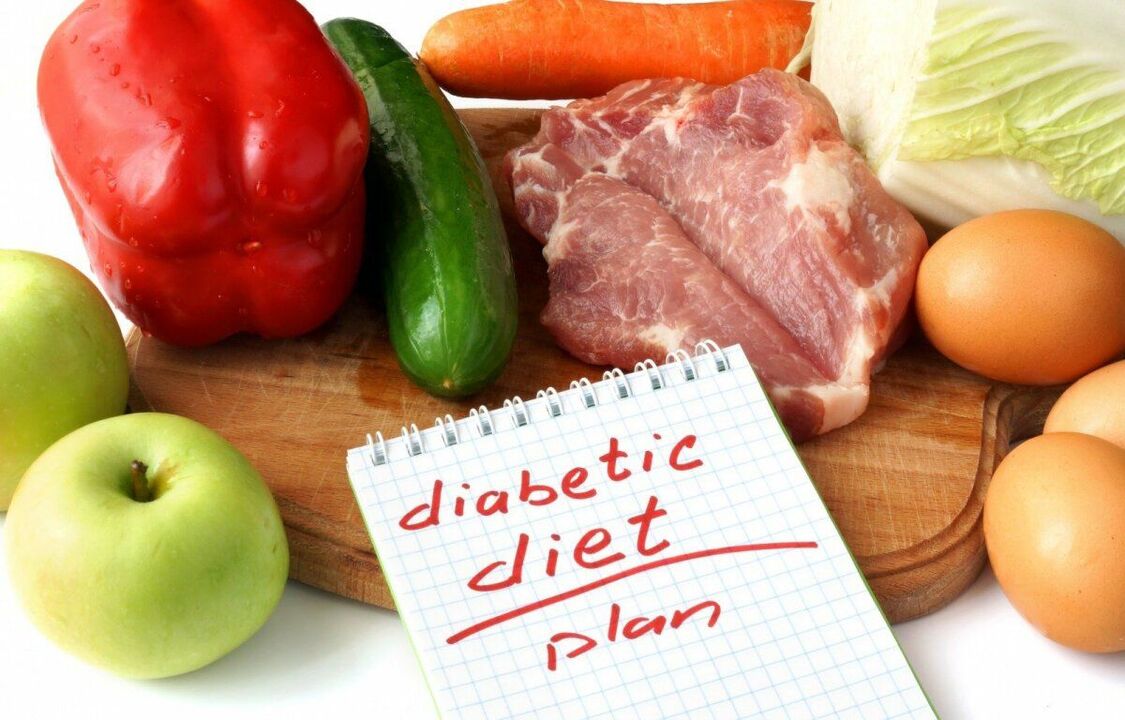
What is diabetes mellitus and its types
Diabetes mellitus is a chronic disease in which there are violations of glucose metabolism. It may be due to a decrease in the amount of insulin hormone produced by pancreatic cells, then type 1 (insulin-dependent) diabetes is diagnosed, or it results from regular overeating leading to overweight, severe stressand other factors, then type 2 (non-insulin dependent) diabetes mellitus develops.
Insulin is a biologically active substance released into the bloodstream, capturing a glucose molecule and transporting it to the desired cells.
Diabetes is type 2 diabetes that is most often diagnosed today and requires closer attention of doctors, as well as adherence to special principles of nutrition, as it becomes a consequence of the unhealthy lifestyle that a person leads. With regular intake of a large amount of carbohydrates in the body, the pancreas works for consumption and eventually either ceases to cope with its function, or produces "damaged" insulin, which cells and tissues do not perceive. This means that such insulin is not able to capture glucose and transport it to its destination, since the cells "do not see" it, ie. develops insensitivity to it. Not the slightest role in this is played by changes in the hormonal background that inevitably arise with age.
In both cases there will be a sharp increase in the concentration of glucose (sugar) in the blood and the development of characteristic symptoms:
- increased thirst;
- dry mouth;
- weakness;
- deterioration of vision;
- increased appetite, etc.
Type 2 diabetes mellitus is diagnosed more often, respectively in 85-90% of patients. It usually occurs after 40 years, and especially often after 65 years. Such sensitivity of older people to the development of disorders of carbohydrate metabolism is a consequence of a decrease in physical activity and a decrease in muscle mass, which is the main consumer of glucose, and the abdominal obesity observed more and more yesbecomes an additional factor that increases the risk of developing non-insulin dependent diabetes.
Abdominal overweight is the predominant deposition of adipose tissue in the abdomen.
Diagnosing diabetes is not difficult. For this, a blood glucose test is performed. Taking adult indicators serves as a reason for further examination and selection of optimal treatment tactics, one of the mandatory components of which is nutritional correction.
Why is it important to follow basic nutritional principles?
With any type of diabetes mellitus, the blood sugar level rises, but despite this, the cells cannot get it due to lack of insulin or development of insulin resistance. Since glucose is a monosaccharide that is a product of the breakdown of carbohydrates, it acts as the body’s main source of energy. Therefore, if the tissues do not receive it in sufficient quantities, they experience hunger, which, due to the transmission of the corresponding nerve impulses to the brain, leads to the appearance of a similar feeling in humans. Therefore, with diabetes, patients may want to eat something, especially sweet, even an hour after a hearty meal.
As a result, patients openly eat high-calorie carbohydrate foods, which in type 2 diabetes lead to rapid weight gain and obesity progression. This leads to an even greater jump in blood glucose levels, an increase in the load on the pancreas, an increase in insulin production, an increase in tissue resistance to it, a deterioration of the condition, viz. , The formation of a vicious circle vicious.
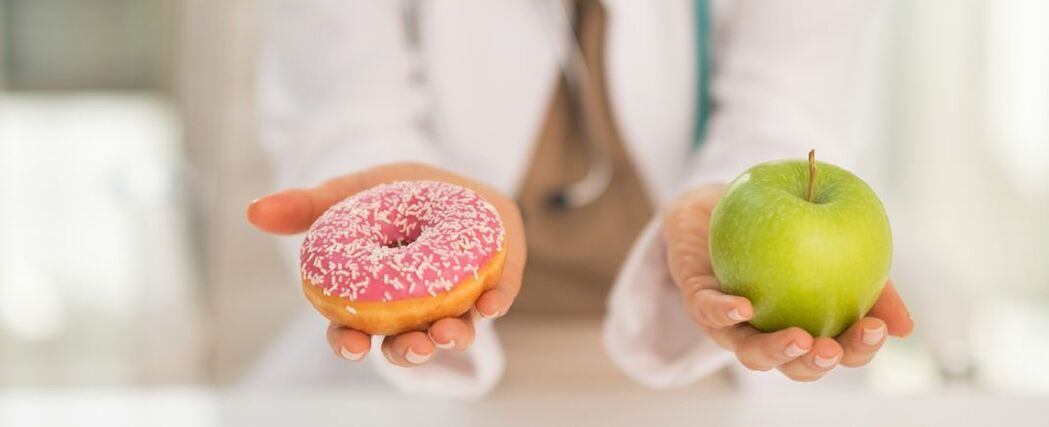
In such situations, if you do not intervene in time and do not wait for this cycle, high sugar levels (hyperglycemia) will lead to the development of ketoacidosis and diabetic coma. Initially, the patient will feel strong thirst and often goes to the toilet, then weakness, shortness of breath will quickly merge, a characteristic odor of acetone will appear from the mouth and urine, nausea and vomiting will occur. In the absence of competent medical care, confusion and, ultimately, a diabetic coma will ensue.
In addition, long-term uncontrolled (decompensated) diabetes mellitus can lead to the development of:
- retinal lesions with irreversible subsequent blindness;
- impaired renal function and chronic renal failure;
- poor healing of trophic leg ulcers, very difficult to treat;
- osteoporosis, fraught with the possibility of getting a fracture of any of the skeletal bones, including the spine, even with a small impact;
- disorders of the heart and blood vessels, organs of the digestive tract, etc.
Therefore, it is important not only to diagnose diabetes mellitus in time and take the medication prescribed by the endocrinologist, but also to strictly follow the recommendations regarding nutrition.
Characteristics of the diet
The diet for type 1 and type 2 diabetes has some changes that patients need to understand. With regard to food for insulin-dependent diabetes, in which patients receive lifelong replacement therapy in the form of regular insulin injections, physicians in different countries look at the need to limit simple carbohydrates in different ways.
Foreign endocrinologists believe that it is not necessary to reduce the amount of their consumption in type 1 diabetes with properly selected insulin therapy. Local doctors believe that this is fraught with undesirable consequences and insist on the need to limit the consumption of simple carbohydrates, but not to completely abandon them, as in non-insulin dependent diabetes. In type 2 diabetes, such disagreements are inappropriate, as with it the use of sugar can turn into dire consequences, which is not questioned in any country.
Furthermore, people with type 1 diabetes should be able to count bread units (XE), and people with type 2 diabetes should be able to determine the glycemic index (GI). The diet should be structured in such a way that these indicators of the daily diet correspond to the norms developed.
Therefore, today with diabetes mellitus, patients are prescribed the so-called diet no. 9 in various modifications, the differences between which are insignificant. Which table is most suitable for a particular patient is determined by the endocrinologist, based on the test results and the person's condition.
In general, diet no. 9 is designed to normalize carbohydrate metabolism by reducing the amount of simple carbohydrates consumed and, accordingly, by lowering blood glucose levels. As a result, it is possible to bring blood sugar levels back to normal, prevent the development of possible disorders of fat metabolism and complications of the disease.
Dieta Nr. 9 assumes a complete rejection of simple carbohydrates against the background of daily consumption of not more than 300 g of complex carbohydrates while maintaining the amount of protein foods within the physiological norm.
Basic nutritional principles
In the case of diabetes mellitus of any type, the following recommendations should be followed:
- food should certainly be fractionated and consist of at least 5 meals, especially with an insulin-dependent form;
- breakfast is a mandatory meal;
- when designing the menu, the physiological ratio of proteins (meat, fish dishes, dairy products), carbohydrates (cereals, bread) and vegetables should be respected, they should make up 25%, 25% and 50%, respectively;
- Nutritional advantage is always given to foods with a low glycemic index and a high percentage of plant fiber;
- every meal starts with vegetables, and protein is left at the end;
- the amount of salt should not exceed 5 g per day;
- fasting for diabetes is forbidden, if necessary, to reduce weight, this is done by increasing physical activity;
- when choosing a method of cooking vegetables, it is recommended to give preference to the minimum heat treatment or to abandon it completely, boiling, roasting and steaming are ideal;
- A vegetarian diet for diabetes is not the best solution, although it helps to improve the course of the disease and increase insulin sensitivity, you can switch to it only with the permission of an endocrinologist.
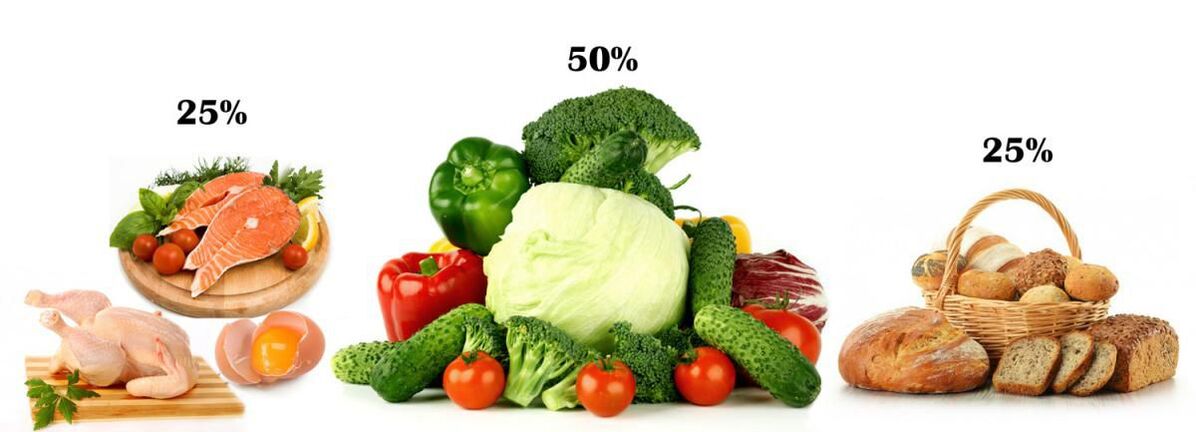
Diet for type 1 diabetes
Insulin-dependent diabetes is usually diagnosed in childhood. Since the cause of its development is the destruction of pancreatic cells that synthesize insulin, patients should be prescribed insulin therapy and medication and the dosage is chosen individually. Insulin injections completely cover the deficit in hormone production in the body, so no significant dietary restrictions are required, but the child's parents, and then themselves, must learn to accurately calculate the amount of carbohydrates consumed in order to correspond to the dose ofadministered insulin. For this purpose, special tables have been created showing the number of so-called grain units in each product.
In type 1 diabetes, you only need to refuse:
- any sugary drinks, including juices;
- breakfast cereals;
- confectionery.
You can eat no more than 7 XE per meal, and up to 25 XE per day. In this case, the sum of all carbohydrates eaten per serving volume is summarized. For example, 2 XE contained in 3 tbsp. finished pasta, 4 tbsp. loriz, 14 tbsp. legumes or 420 g tomatoes.
1 XE is equal to 12 g of carbohydrates or 20 g of bread.
Sweets are not strictly forbidden, but only those who control blood glucose levels several times a day can afford them, they accurately count XE and can independently adjust the dose of insulin administered.
In type 1 diabetes mellitus, patients are prescribed diet no. 9b and large doses of insulin. It involves the use of 400-450 g of carbohydrates and is very close to the diet of most modern people. It is allowed to consume 20-30 g of sugar every day.
The endocrinologist who monitors the patient's condition will definitely tell you how to distribute the amount of food between individual doses, depending on the type of medicine he has prescribed. So with the introduction of insulin twice a day (morning and afternoon), it is necessary to design the menu so that almost 2/3 of the total daily intake of carbohydrates falls at this time. Furthermore, after each injection, you should eat 2 times - 15 minutes after the injection and 3 hours after that. Fractional diet and control of the amount of XE is the basis of the diet for type 1 diabetes.
If, after the injection, the patient suddenly feels weak, this indicates a lack of glucose in the body. In such situations, you should immediately eat a piece of dark chocolate.
Thus, with some form of insulin-dependent disease, the main difficulty lies in the need to control not the type of food but its volume and the counting of bread units.
Diet for type 2 diabetes
In most cases, being overweight is the main cause of the disease. Therefore, diet for type 2 diabetes is the first and foremost ingredient in treating and preventing complications. With its help, it will be possible to normalize sugar levels and control weight, thus preventing the appearance of unwanted changes and worsening of the condition.
All patients should independently monitor blood glucose levels daily using home glucometers and if consistently high rates are obtained, consult a physician immediately.
If the patient is diagnosed with an insulin-independent form of mild to moderate disease and his weight is within normal limits, he is assigned the basic diet no. 9 with a daily caloric intake of up to 2500 kcal. In such situations, you can consume no more than 275-300 g of complex carbohydrates from different sources per day.
In the presence of overweight, it is required not only to keep the glucose level within normal limits, but also to reduce weight, as its excess negatively affects the effectiveness of treatment and the well-being of patients. Therefore, in such cases, patients are prescribed the so-called reduced diet no. 9, which is characterized by a reduced calorie content due to an even greater limit to the allowable amount of complex carbohydrates consumed each day. In this case, the endocrinologist individually calculates this rate based on the degree of overweight. Therefore, in different cases, patients may be allowed to consume from 100 to 225 g of carbohydrates, and the total caloric intake should not exceed 1700 kcal per day.
What is not allowed
So, with type 2 diabetes, it is necessary to completely exclude from the diet foods that contain so-called fast carbohydrates, namely those that are broken down into glucose and absorbed into the bloodstream within 15 minutes. They quickly provide an energy boost, but do not create a feeling of satiety, so after eating them, hunger returns very quickly. This includes:
- sugar;
- honey;
- cakes, classic pastries;
- ice cream, chocolate;
- jam, jam, marmalade, canned food;
- sweet vegetables, fruits, berries (grapes, bananas, dates, pineapples, persimmons, dried fruits);
- white bread, bread;
- oatmeal;
- smoked meats, fatty dishes;
- mayonnaise;
- fast food, snack.
For diabetics, special recipes have been created, including permitted products, for baking.
Diet number 9 does not require complete rejection, but recommends minimizing the amount consumed as much as possible:
- potatoes;
- beets;
- Egypt;
- carrots;
- soy products;
- pasta;
- of bread.
If you are obese, you will need to completely abandon all high-fat foods:
- butter and vegetable oil, spread;
- sour cream, fatty cheeses, cottage cheese, cream;
- pork fat, fatty meats and fish, skinned chicken;
- arra, fara;
- alcohol, etc.
In such situations, it is recommended to replace these products with vegetables that have a beneficial effect on carbohydrate metabolism. These are leafy greens, eggplants, cucumbers, turnips, cauliflower, squash, zucchini, radish, etc.
Necessary weight to try to completely abandon foods with a large amount of fat, in particular canned foods, products of the meat processing industry, store sauces. They are replaced with boiled or stewed dietary meat (chicken, rabbit, turkey, low-fat yogurt without additives).
What can
Carbohydrates are an essential part of your daily diet, and they should be present in the diabetes menu, but only in acceptable amounts. Patients are allowed to eat only foods with slowly absorbed carbohydrates and high fiber content. Ajo:
- vegetables;
- whole grain bread;
- whole grain cereals (8-10 tablespoons), with the exception of refined rice.
Since sugar in any form is prohibited for diabetics, its glucose-free substitutes have been specially created. Many of them are many times sweeter than sugar and can be used in minimal quantities. Modern sweeteners include xylitol, stevia, sorbitol, fructose. But studies have shown that some of them can have a negative effect on the body. Stevia is considered the safest sugar substitute today. It is obtained from natural raw materials and in sweetness exceeds sugar by 10-30 times (depending on the form of release: a powder from an herb or an extract called stevioside).
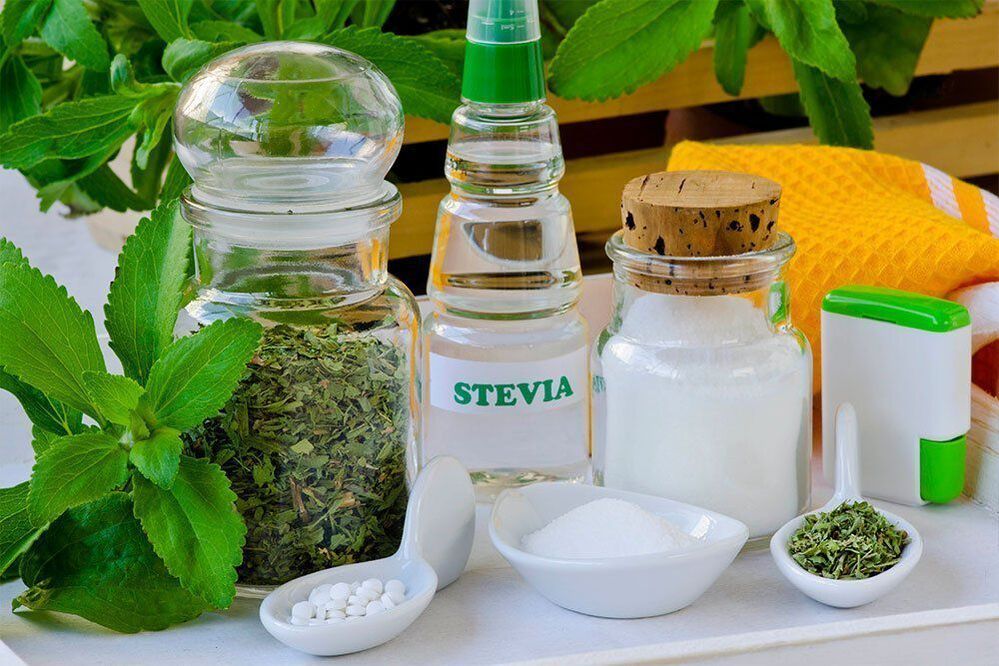
It is important for patients to know the glycemic index of foods. Today, there are special tables that help you navigate the choices and accurately calculate the allowable consumption rate. In diabetes, preference should be given to foods with a GI of less than 55 (apples, cucumbers, cherries, broccoli, lettuce, milk, cauliflower, etc. ). They break down slowly and lead to little or no increase in blood sugar levels. Such products can be eaten up to 200 g during a meal, but preferably along with protein food.
Heat treatment increases GI.
Allowed to use:
- potatoes (not more than 200 g per day);
- meat and vegetable juice-based dishes;
- lean meats and fish (chicken, turkey, pollock, pike, shake);
- lentils;
- low-fat fermented milk and milk products, cheeses with a fat content of less than 30%;
- eggs (3-4 per week, but not more than 1 per day);
- vegetable oil (not more than 1 tbsp. l. per day);
- special cakes, waffles, bread for diabetics.
When making homemade compotes, sweeteners are added instead of sugar.
Nutrition for gestational diabetes
Pregnant women with a genetic predisposition to developing diabetes mellitus can cope with the development of so-called gestational diabetes in 20-24 weeks. It arises against the background of the presence of a reduced hereditary sensitivity of tissues to inulin, amplified by hormones produced during pregnancy in increased quantities: estrogen, prolactin, cortisol. They are capable of blocking insulin and causing high blood sugar.
Often, after birth, carbohydrate metabolism gradually returns to normal as the hormonal background is normalized. However, if the basic principles of nutrition and diet are not followed, there is not only a risk of maintaining diabetes mellitus, but also the development of complications that can lead to premature birth, pyelonephritis in the mother, fundus pathology, and complications duringbirth. Fisht for the purpose of early detection of gestational diabetes during pregnancy that blood glucose tests are performed regularly and if hyperglycemia is detected, a diet is prescribed.
In such situations, women are advised to:
- completely exclude simple carbohydrates from the diet (same sugar, cakes, chocolate, pastries, white and black bread, bananas, grapes, juices, dried fruits, etc. );
- limit the intake of complex carbohydrates to the amounts recommended by the doctor;
- eliminate most of the daily diet for vegetables, unsweetened fruits;
- refuse to eat fatty foods, fried foods, semi-finished products, a variety of sausages, smoked products;
- when choosing a method of cooking products, give preference to baking, boiling, steam;
- eat in fractions, preferably every 2 hours, emphasizing 3 main meals (breakfast, lunch and dinner), as well as 2 supplements (second breakfast, afternoon snack);
- drink at least 1. 5 liters of water.
Pregnant women with gestational diabetes are advised to measure their blood sugar after each meal.

All of these recommendations are important for the postpartum period. In any case, in the first months of a baby’s life, a breastfeeding woman is forced to sit on a hypoallergenic diet and refuse fried and fatty foods. The same diet will help eliminate gestational diabetes and avoid its transition to a chronic disorder of carbohydrate metabolism within 2-3 months after birth. If, after this period of time, the blood glucose level does not return to normal, the woman should consult an endocrinologist for examination and development of treatment tactics.
Sugar lowering products
There are a number of foods that can help lower blood glucose levels. They are called hypoglycemic and are recommended for patients with diabetes mellitus. But since each person is a unique biological system and has individual characteristics, he can react to certain types of food in his own way, and not just give allergic reactions. Therefore, although glucose-lowering foods can provide invaluable help for patients with diabetes mellitus, especially type 2, it is worth consulting an endocrinologist before starting their daily use.
Thus, foods that lower sugar include:
- Cherry (GI 22) - contains anthocyanin, which helps lower blood sugar and blood pressure, and eliminate the so-called bad cholesterol. The daily rate is 100 g.
- Grapefruit (GI 29) - Contains naringin, a powerful antioxidant that helps increase insulin sensitivity in tissues. It is recommended to consume 1 medium-sized grapefruit or freshly squeezed juice from it per day (commercial not suitable). But grapefruit can negatively affect the quality of absorption of various drugs, so it is necessary to consult with your doctor before including it in the menu.
- Cinnamon is a source of polyphenols that help keep blood sugar levels under control. The daily rate is 1/2 teaspoon. Can be added to cottage cheese, oatmeal, and is very convenient for making casserole with apples.
- Broccoli is a valuable source of fiber, which is so beneficial for diabetes, and the substances it contains help slow down the rate of sugar absorption in the gut. The daily rate is 200 g.
- Cranberries are one of the healthiest foods for diabetics, as they contain valuable glycosides, tannins, anthocyanins, which help maintain normal glucose levels and reduce the risk of developing diabetic retinal damage. The daily rate is 200 g.
- Flour and flour porridge are rich in fiber, which helps maintain sugar levels.
- Jerusalem artichoke is a natural source of insulin, due to which its use contributes to the normalization of glucose levels, and the presence of fructose in the composition provides a pleasant sweet taste, which allows it to be used raw orto be added to salads.
- Garlic is one of the healthiest foods for everyone, as it contains many antioxidants, natural antibacterials and other substances. Its use makes the pancreas work more actively, which is very valuable for patients with type 1 diabetes.
- Fish - Fish diabetics are shown to eat at least 2 times a week, and whenever possible they try to replace meat dishes with it. Helps to normalize sugar levels as well as to obtain polyunsaturated unsaturated essential acids.
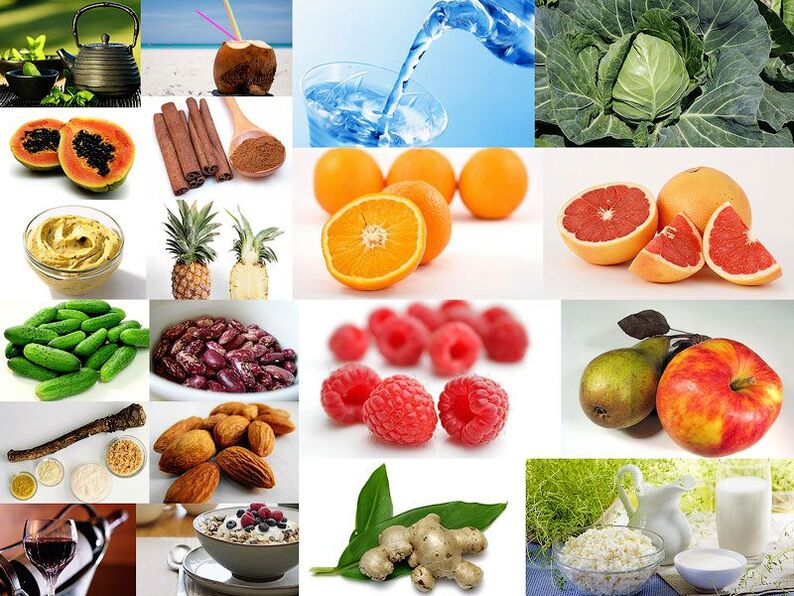
Thus, nutrition for diabetes can be varied and delicious. With a competent approach to menu planning, it will not cause rejection, but, on the contrary, will help increase energy and efficiency, as it largely corresponds to the principles of rational nutrition. But remember, it is important in diabetes to maintain a normal level of physical activity, as exercise increases tissue sensitivity to insulin.

































